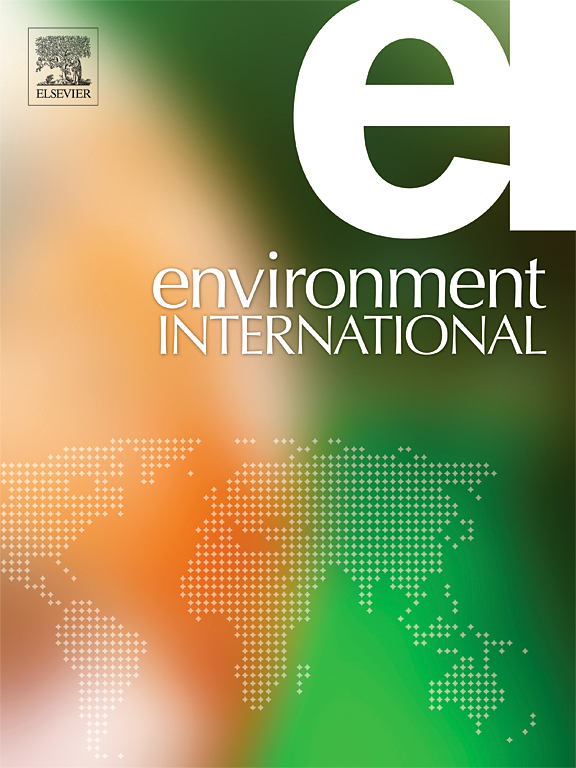Application of traditional and reverse labeling approaches to assess dietary bioavailability of metals in biofilms
IF 10.3
1区 环境科学与生态学
Q1 ENVIRONMENTAL SCIENCES
引用次数: 0
Abstract
The accuracy of stable isotope tracing techniques, traditional and reverse labeling, in evaluating metal bioavailability remains uncertain. This study employed pulse-chase feeding combined with multi-heavy-metal stable isotope labeling to compare the effectiveness of these methods in assessing Zn, Cr, and Pb bioavailability in natural biofilms consumed by the Chinese mystery snail (Cipangopaludina chinensis). Results showed that the waterborne uptake rate constants of 67Zn and 204Pb were higher than the dietborne uptake rate constants () for both labeling techniques. However, metal accumulation by C. chinensis through dietborne uptake, as determined using reverse labeling, was markedly greater than accumulation via the waterborne uptake route. Reverse labeling values for 67Zn, 53Cr, and 204Pb were 5 %, 12 %, and 21 % higher, respectively, than those from traditional labeling. Despite these differences, both labeling techniques revealed the high bioavailability of heavy metals in biofilms to C. chinensis. Heavy metal assimilation efficiency and ingestion rates were consistent across labeling techniques. Furthermore, neither individual nor multi-metal exposure affected net accumulation, assimilation efficiency, and ingestion rates for metals in biofilms under the same labeling method. This study highlights the utility of stable isotope labeling in bioavailability assessments while emphasizing method variations.


应用传统和反向标记方法评估生物膜中金属的膳食生物利用度
稳定同位素示踪技术(传统和反向标记)在评估金属生物利用度方面的准确性仍然不确定。本研究采用脉冲追逐法结合多种重金属稳定同位素标记法,比较了两种方法对中国神秘蜗牛(Cipangopaludina chinensis)天然生物膜中Zn、Cr、Pb生物利用度的评价效果。结果表明,两种标记方法对67Zn和204Pb的水性吸收速率常数均高于食源性吸收速率常数(kufkuf)。然而,用反向标记法测定的结果表明,中国紫草通过食源性摄取的金属积累量明显大于通过水媒摄取途径的积累量。反向标记67Zn、53Cr和204Pb的kufkuf值分别比传统标记高5 %、12 %和21 %。尽管存在这些差异,但两种标记技术都揭示了生物膜中重金属对中华月桂的高生物利用度。不同标记技术的重金属同化效率和摄食率是一致的。此外,在相同的标记方法下,个体或多种金属暴露都不会影响生物膜中金属的净积累、同化效率和摄入率。本研究强调了稳定同位素标记在生物利用度评估中的效用,同时强调了方法的变化。
本文章由计算机程序翻译,如有差异,请以英文原文为准。
求助全文
约1分钟内获得全文
求助全文
来源期刊

Environment International
环境科学-环境科学
CiteScore
21.90
自引率
3.40%
发文量
734
审稿时长
2.8 months
期刊介绍:
Environmental Health publishes manuscripts focusing on critical aspects of environmental and occupational medicine, including studies in toxicology and epidemiology, to illuminate the human health implications of exposure to environmental hazards. The journal adopts an open-access model and practices open peer review.
It caters to scientists and practitioners across all environmental science domains, directly or indirectly impacting human health and well-being. With a commitment to enhancing the prevention of environmentally-related health risks, Environmental Health serves as a public health journal for the community and scientists engaged in matters of public health significance concerning the environment.
 求助内容:
求助内容: 应助结果提醒方式:
应助结果提醒方式:


